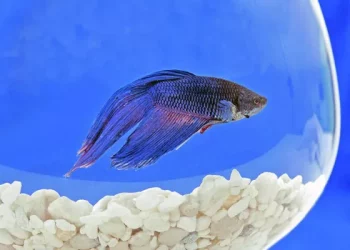The world of snakes is filled with incredible diversity, with each species having its own unique set of characteristics, behaviors, and habitats. Among the fascinating variety of snakes, the hognose snake (genus Heterodon) stands out for its distinctive appearance and behaviors. However, there is often confusion about whether a hognose snake belongs to the viper family. In this article, we will explore the hognose snake’s biology, behavior, and classification to answer this question once and for all: is a hognose snake a viper?
Introduction to Snakes: The Basics of Classification
Before diving into the specifics of the hognose snake, it’s important to understand a bit about how snakes are classified. Snakes belong to the suborder Serpentes, which is part of the larger order Squamata, which also includes lizards. Within this suborder, snakes are further divided into different families, each of which contains species with certain shared characteristics.
For example, the family Viperidae includes vipers, which are a group of snakes known for their triangular-shaped heads and long, hinged fangs that allow them to inject venom into their prey. Other families of interest include Colubridae (the largest snake family, which includes many non-venomous species) and Elapidae (which includes cobras, kraits, and sea snakes).
So, what about the hognose snake? Let’s take a closer look at its biology and determine where it fits into the snake family tree.
What is a Hognose Snake?
The hognose snake, also known by its scientific name Heterodon, is a non-venomous snake species native to North America. These snakes are most famous for their unique appearance and defensive behaviors. They get their name from the upturned, pig-like snout that they use to dig through loose soil in search of prey. This physical feature makes them easily identifiable in the wild.
There are several species within the hognose snake genus, including the Western hognose (Heterodon nasicus), the Eastern hognose (Heterodon platirhinos), and the Southern hognose (Heterodon simus). These species can be found across a variety of habitats, from forests and grasslands to suburban backyards.
One of the most notable aspects of hognose snakes is their defense mechanism. When threatened, a hognose snake will often display a series of dramatic behaviors, such as flattening its neck, hissing loudly, and even playing dead by flipping onto its back and releasing a foul-smelling musk. These behaviors are meant to deter predators, and while the hognose is non-venomous, its defensive tactics often lead people to believe it is a more dangerous snake than it truly is.
Despite their fearsome reputation, hognose snakes are harmless to humans and pose little threat, even though their appearance might suggest otherwise.
Understanding Vipers: Key Features and Characteristics
Vipers, on the other hand, belong to the family Viperidae and are a very different group of snakes compared to the hognose. There are two main subfamilies of vipers: the true vipers (Viperinae) and the pit vipers (Crotalinae). The latter includes species such as rattlesnakes, copperheads, and cottonmouths, which are well-known for their distinctive triangular heads and the presence of heat-sensing pits on their faces, used for detecting warm-blooded prey.
A few defining features of vipers include:
Triangular Head Shape: Many vipers have a distinct, broad, triangular-shaped head that distinguishes them from other snakes.
Venomous Fangs: Vipers are equipped with long, retractable fangs that allow them to inject venom into their prey. This venom is used to immobilize and begin digesting the prey before consumption.
Heat-Sensing Pits: As mentioned earlier, pit vipers (such as rattlesnakes) have specialized heat-sensing pits located between their eyes and nostrils. These pits enable them to detect thermal radiation from warm-blooded animals, aiding in hunting.
Venom Composition: Viper venom can vary between species, but it is typically designed to immobilize and digest prey. Some vipers have cytotoxic venom, which destroys tissue, while others have neurotoxic venom, which affects the nervous system.
Comparing the Hognose Snake to Vipers
Now that we have a basic understanding of both the hognose snake and vipers, let’s compare them directly to see whether or not the hognose snake can be classified as a viper.
1. Taxonomy and Classification
The most significant difference between hognose snakes and vipers lies in their taxonomic classification. As mentioned earlier, hognose snakes belong to the genus Heterodon, which is part of the family Colubridae. This family contains many non-venomous snakes, though some species within this family may possess mild venom for hunting or defense. Vipers, on the other hand, belong to the family Viperidae, which is a completely different group of snakes altogether.
This means that, scientifically speaking, hognose snakes are not vipers. They are not part of the viper family and do not share the same evolutionary lineage.
2. Head Shape
While some hognose snakes may appear to have a slightly flattened or triangular head, this is not the same as the distinct triangular shape found in many vipers. The broad, triangular head of a viper is often a result of its large venom glands, and the shape is an adaptation for efficient venom delivery.
In contrast, the hognose snake’s snout is upturned, giving it a pig-like appearance. This unique feature helps it to dig and forage in loose soil for amphibians and small invertebrates, its primary food source. The shape of the hognose snake’s head is primarily functional and not related to venom delivery or hunting in the same way a viper’s triangular head is.
3. Venom and Fangs
One of the most distinguishing features of vipers is their venomous bite. Vipers have long, hinged fangs that allow them to inject venom deep into their prey. The venom serves as both a means of immobilizing the prey and starting the digestive process.
Hognose snakes, by contrast, do have a mild venom, but it is not used in the same way as viper venom. The venom of a hognose snake is not dangerous to humans and is typically used to subdue small prey, such as amphibians. The fangs of hognose snakes are small and not hinged, making their venom delivery much less effective than that of vipers.
Additionally, the venom of hognose snakes is generally not considered harmful to humans. Even if a hognose snake does bite, the bite is often described as mild, and any symptoms typically subside without medical treatment. This is in stark contrast to vipers, whose bites can be potentially lethal if left untreated.
4. Behavior and Defensive Tactics
Hognose snakes and vipers also differ greatly in their behavior. While both may exhibit defensive behaviors, the tactics used by each are quite different. Vipers are generally more aggressive when threatened and may strike in defense, relying on their venomous bite as a deterrent.
Hognose snakes, however, are famous for their dramatic defense displays. When confronted by a predator or a threat, a hognose snake will often flatten its neck to resemble a cobra, hiss loudly, and even roll over onto its back to feign death. This dramatic display of “playing dead” is a survival strategy designed to confuse or deter potential predators.
5. Habitat and Distribution
Both hognose snakes and vipers can be found in a variety of habitats, but there are some key differences in their distribution and preferences. Hognose snakes are commonly found in North America, particularly in the United States, where they inhabit grasslands, forests, and suburban areas.
Vipers, on the other hand, have a much broader distribution, with species found across the world, including in Africa, Asia, and Europe. Vipers are typically more associated with wild, untouched habitats like forests and deserts, although some species (like the copperhead and rattlesnake) can also be found in suburban areas.
Conclusion
Based on the comparison of their taxonomic classification, physical features, venomous capabilities, and behaviors, we can confidently conclude that the hognose snake is not a viper. While hognose snakes may share certain superficial similarities with vipers (such as the shape of their heads or their defensive behaviors), they are not part of the viper family and do not share the same biological characteristics as true vipers.
In summary, the hognose snake is a fascinating species with its own unique traits, behaviors, and evolutionary lineage. While it is often mistaken for a viper due to its defensive displays and appearance, it is important to understand that hognose snakes are non-venomous, harmless creatures that are distinct from vipers in both taxonomy and biology. If you encounter one in the wild, it is best to appreciate its unique behavior from a safe distance and remember that this snake is not a threat to you.
By understanding the true nature of the hognose snake and differentiating it from vipers, we can foster a greater appreciation for the incredible diversity of snakes and the important roles they play in our ecosystems.
Related Topics:





















